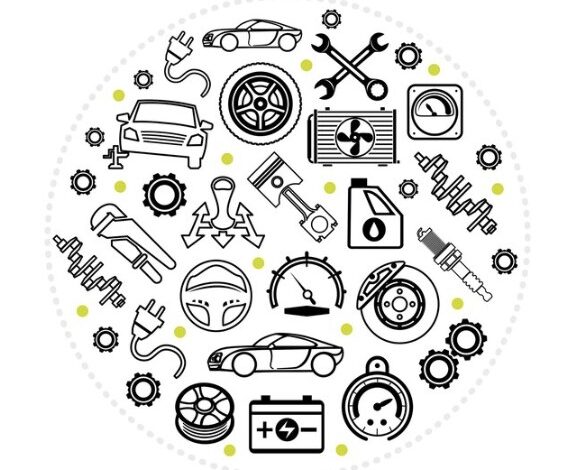How to Install Popular Honda Car Parts Yourself

Maintaining your Honda vehicle can be a rewarding experience, especially if you enjoy hands-on projects. With the right tools and a bit of know-how, you can install many popular Honda car parts yourself, saving money and time. This guide will walk you through the installation process of some common parts.
Tools You’ll Need
Before you start, ensure you have the following tools:
- Socket wrench set
- Screwdrivers (flathead and Phillips)
- Jack and jack stands
- Torque wrench
- Pliers
- Safety gloves and goggles
- Vehicle service manual (specific to your Honda model)
1. Changing the Engine Air Filter
Why It’s Important
The engine air filter prevents dirt and debris from entering your engine, ensuring optimal performance and fuel efficiency.
Steps to Install
- Locate the Air Filter Box:
- Open the bonnet and find the air filter box. It’s usually a black plastic box near the front of the engine compartment.
- Remove the Old Filter:
- Unclip or unscrew the top of the air filter box.
- Lift the cover and take out the old air filter.
- Install the New Filter:
- Place the new filter in the box, ensuring it fits snugly.
- Replace the cover and secure it with clips or screws.
- Check for Proper Installation:
- Make sure the cover is properly sealed to prevent any unfiltered air from entering.
2. Replacing the Spark Plugs
Why It’s Important
Spark plugs ignite the air-fuel mixture in the engine, making them crucial for engine performance and efficiency.
Steps to Install
- Locate the Spark Plugs:
- Follow the spark plug wires or coils to find the spark plugs, usually located on top of the engine.
- Remove the Old Spark Plugs:
- Use a spark plug socket and wrench to carefully unscrew and remove the old spark plugs.
- Install the New Spark Plugs:
- Check the gap on the new spark plugs with a gap tool to ensure they meet the specifications in your service manual.
- Screw in the new spark plugs by hand to avoid cross-threading, then tighten with a wrench (do not overtighten).
- Reconnect Wires or Coils:
- Attach the spark plug wires or coils back to the new spark plugs.
3. Replacing Brake Pads
Why It’s Important
Brake pads are essential for stopping your vehicle. Worn-out pads can reduce braking efficiency and safety.
Steps to Install
- Lift the Vehicle:
- Use a jack to lift the car and place it securely on jack stands. Remove the wheels to access the brakes.
- Remove the Old Brake Pads:
- Locate the brake caliper and remove the bolts holding it in place.
- Slide the caliper off the rotor and remove the old brake pads.
- Install the New Brake Pads:
- Apply brake grease to the back of the new pads to reduce noise.
- Place the new pads into the caliper bracket.
- Reattach the Caliper:
- Compress the caliper piston using a C-clamp to make room for the new pads.
- Reattach the caliper over the new pads and tighten the bolts.
- Reinstall the Wheels:
- Put the wheels back on and lower the car from the jack stands.
4. Changing the Oil and Oil Filter
Why It’s Important
Regular oil changes are vital for engine lubrication and longevity.
Steps to Install
- Drain the Old Oil:
- Lift the car with a jack and place it on jack stands.
- Place an oil pan under the oil drain plug, remove the plug, and let the oil drain out completely.
- Replace the Oil Filter:
- Unscrew the old oil filter and let any remaining oil drain out.
- Apply a small amount of new oil to the gasket of the new filter and screw it in place.
- Refill with New Oil:
- Replace the drain plug and fill the engine with the recommended type and amount of oil as specified in your service manual.
- Check Oil Level:
- Start the engine and let it run for a few minutes, then turn it off and check the oil level with the dipstick. Add more oil if necessary.
5. Replacing Wiper Blades
Why It’s Important
Good wiper blades ensure clear visibility during adverse weather conditions.
Steps to Install
- Remove the Old Wiper Blades:
- Lift the wiper arm away from the windshield.
- Press the small tab on the underside of the wiper blade to slide it off the wiper arm.
- Install the New Wiper Blades:
- Attach the new wiper blade by sliding it onto the wiper arm until it clicks into place.
- Test the Wipers:
- Lower the wiper arms back to the windshield and test them to ensure they’re working correctly.
Conclusion
Installing popular Honda car parts yourself can be a straightforward and cost-effective way to maintain your vehicle. Always refer to your Honda’s service manual for specific instructions and safety precautions.



